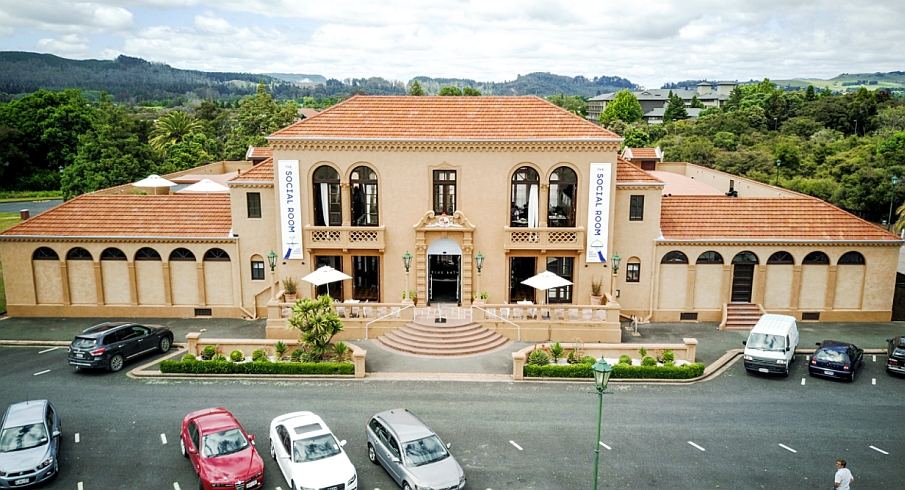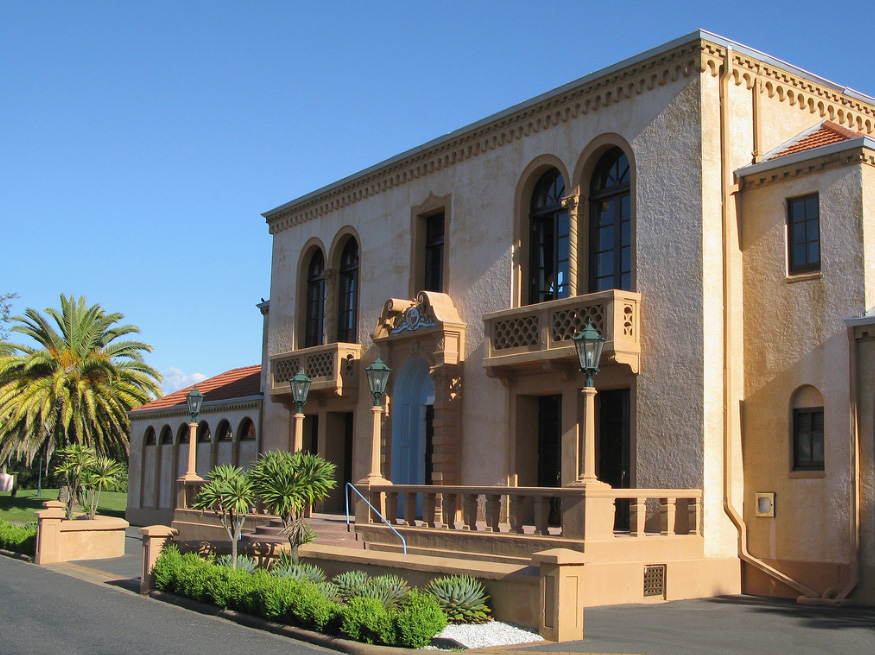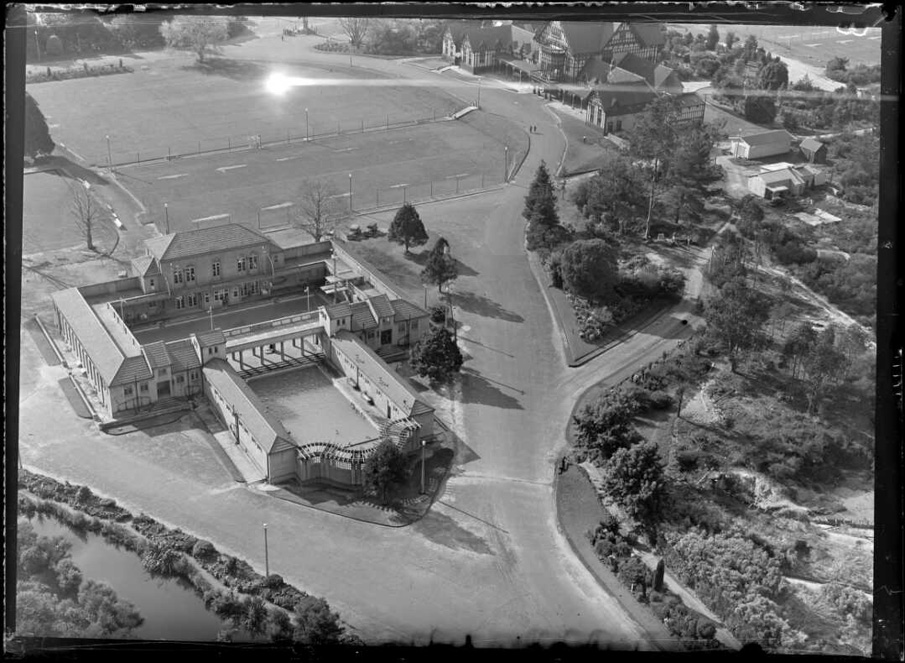The following text was prepared as part of an upgrade project and was completed 16 Dec 2001: The Blue Baths building at Rotorua is a rare example of a Spanish Mission-style bath house, which manifests important changes in attitudes towards health and recreation in the early twentieth century. Fully opened in 1933, the baths were constructed by the Department of Tourism and Health Resorts, as part of a renewed government attempt to promote Rotorua as a geothermal spa of national and international renown. The government had founded Rotorua in the 1880s to encourage the development of tourism in the region. Initially attracting wealthy visitors for medical treatment, the town modified its appeal in the 1920s due to changing approaches towards health care and greater access to transport and leisure by broader sections of the population, particularly in New Zealand. With a greater emphasis placed on more vigorous activity and 'democratic' forms of recreation such as swimming, the Blue Baths building was commissioned. The structure replaced a nearby earlier - and smaller - Blue Baths building, originally erected in 1885. In the political context, it was constructed after the election of Joseph Ward (1856-1930) as Prime Minister in 1928. Ward had been largely responsible for creating the Department of Tourism and Health Resorts in 1901, and had opened the adjacent Bath House in Government Gardens during his first term as premier. The baths consisted of two large geothermal pools in enclosed courtyards - one each for juveniles and adults - with a two-storey entrance foyer and tearooms at the front. In contrast to the segregated bathing that had occurred previously, they allowed mixed swimming for men and women and included other activities such as diving. Designed by the government architect J.T. Mair, the visual appearance of the building alluded to exotic pleasures as well as democratic modernity through the use of a Spanish Mission style and elements of Moderne architecture. Its break with tradition was underlined through its contrast with the nearby timber-framed Bath House, and by incorporating radical new elements such as arc lamps and underwater lighting. With family activity encouraged, the baths saw a number of social and sporting events, including Christmas carnivals and swimming championships. Local schools frequently used the facilities, with many people learning how to swim there. Initially extremely popular, the baths were in decline by 1955, when positive attitudes towards geothermal bathing had reversed and the pools filled with standard water in response to fears about health. The baths were eventually closed in 1982, and lay empty until being refurbished with modifications in 1999-2000. The Blue Baths building is nationally and internationally significant for its associations with the history of tourism, and for its rarity as a building type. The building is unique as a Spanish Mission-style geothermal baths in New Zealand, and highly unusual in an international context. The structure has considerable value for its associations with government involvement in leisure and health, and demonstrates important changes in the development of the spa concept. The building is extremely valuable for its well-preserved nature, embodying changing social attitudes to class, gender relations and family life, as well as 'active leisure' and sport. The building is associated with prominent personalities, including Joseph Ward and J.T. Mair. Its design is significant for reflecting a move in public buildings from British architectural models to those incorporating American and international influences, itself part of a broader cultural shift. It also incorporates Maori influences, such as in a carved face above its main door, which was one of the first times the Crown made reference to Maori in the design of a public building. The building enjoys considerable public esteem as a prominent and aesthetic landmark, located in a public park. It is important as part of a late nineteenth- and early twentieth-century landscape and registered historic area - the Government Gardens - which includes associated structures, buried archaeological remains, historic plantings and geothermal features. It is of particular value for its proximity to the Bath House - constructed earlier in the twentieth century - demonstrating changing attitudes to tourism and health, and their relationship to architecture over a comparatively short space of time.




Location
List Entry Information
Overview
Detailed List Entry
Status
Listed
List Entry Status
Historic Place Category 1
Access
Able to Visit
List Number
5394
Date Entered
6th June 1992
Date of Effect
6th June 1992
City/District Council
Rotorua District
Region
Bay of Plenty Region
Legal description
Pt Lot 3 DPS 15998 (RT SA34C/324) Recreation Reserve (NZ Gazette 1984 p.2272), South Auckland Land District
Location Description
Enter through Queens Drive; the Blue Baths are located beyond the bowling greens on the right past the Bath House.
Related listings
Stay up to date with Heritage this month
